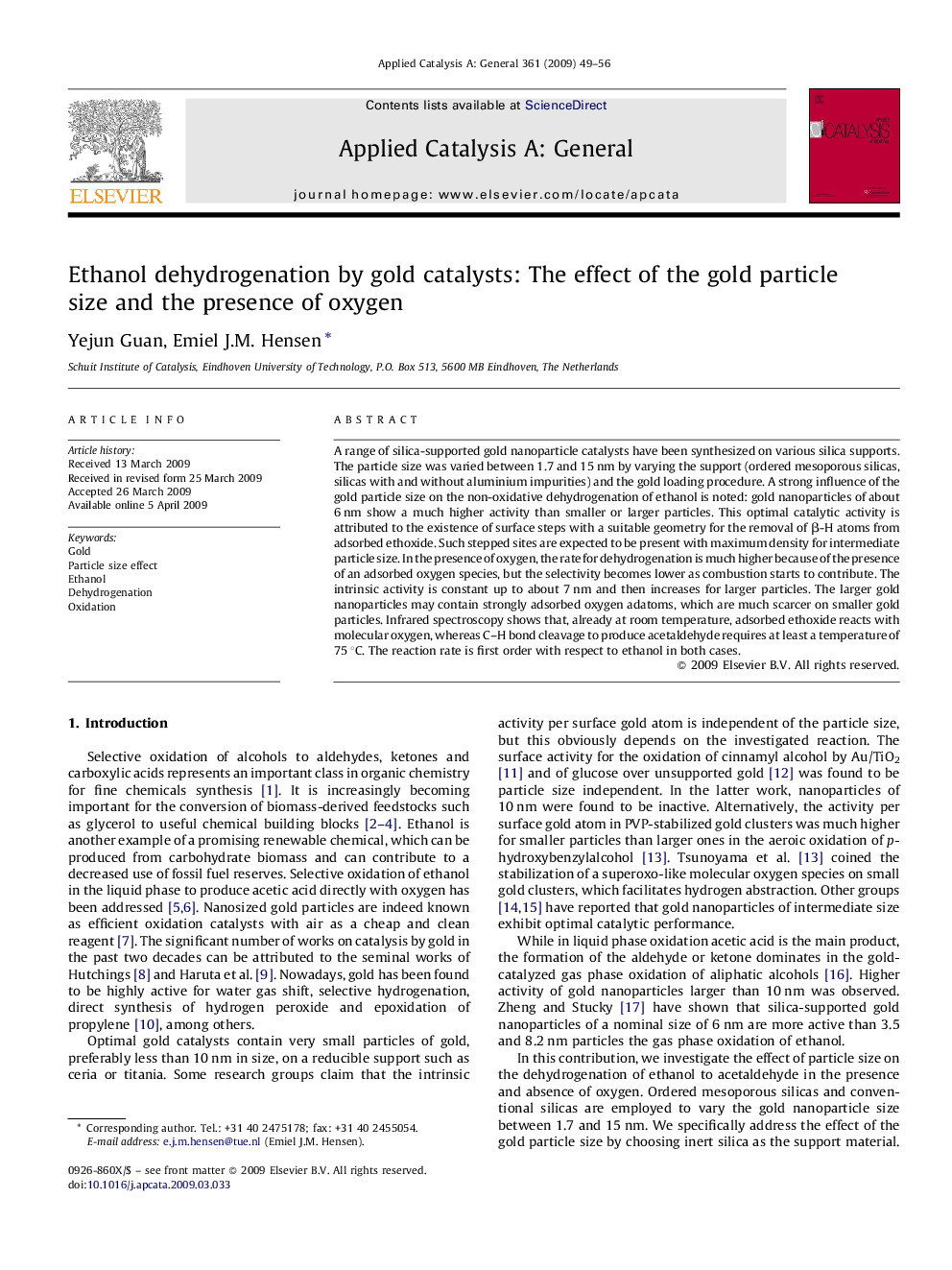| کد مقاله | کد نشریه | سال انتشار | مقاله انگلیسی | نسخه تمام متن |
|---|---|---|---|---|
| 42453 | 45926 | 2009 | 8 صفحه PDF | دانلود رایگان |

A range of silica-supported gold nanoparticle catalysts have been synthesized on various silica supports. The particle size was varied between 1.7 and 15 nm by varying the support (ordered mesoporous silicas, silicas with and without aluminium impurities) and the gold loading procedure. A strong influence of the gold particle size on the non-oxidative dehydrogenation of ethanol is noted: gold nanoparticles of about 6 nm show a much higher activity than smaller or larger particles. This optimal catalytic activity is attributed to the existence of surface steps with a suitable geometry for the removal of β-H atoms from adsorbed ethoxide. Such stepped sites are expected to be present with maximum density for intermediate particle size. In the presence of oxygen, the rate for dehydrogenation is much higher because of the presence of an adsorbed oxygen species, but the selectivity becomes lower as combustion starts to contribute. The intrinsic activity is constant up to about 7 nm and then increases for larger particles. The larger gold nanoparticles may contain strongly adsorbed oxygen adatoms, which are much scarcer on smaller gold particles. Infrared spectroscopy shows that, already at room temperature, adsorbed ethoxide reacts with molecular oxygen, whereas C–H bond cleavage to produce acetaldehyde requires at least a temperature of 75 °C. The reaction rate is first order with respect to ethanol in both cases.
A range of silica-supported gold nanoparticle catalysts between 1.7 and 15 nm have been synthesized by varying the support (ordered mesoporous silicas, silicas with and without aluminium impurities) and the gold loading procedure. A strong influence of the gold particle size on the non-oxidative dehydrogenation of ethanol is noted: gold nanoparticles of about 6 nm show a much higher activity than smaller or larger particles. This optimal catalytic activity is attributed to the existence of surface steps with a suitable geometry for the removal of β-H atoms from adsorbed ethoxide. In the presence of oxygen, the rate for dehydrogenation is much higher because of the presence of an adsorbed oxygen species, but the selectivity becomes lower as combustion starts to contribute. The intrinsic activity is constant up to about 7 nm and then increases for larger particles.Figure optionsDownload as PowerPoint slide
Journal: Applied Catalysis A: General - Volume 361, Issues 1–2, 20 June 2009, Pages 49–56